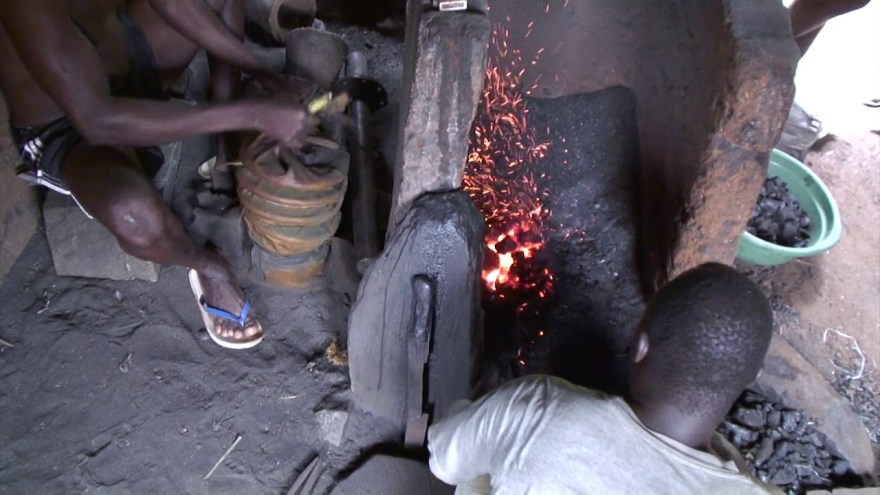Unlocking The Artistry And Innovation Of Metalworking In Africa: Embrace The Power Of African Metalworking Today!
Metalworking in Africa: A Journey into a Rich Craftsmanship
Metalworking in Africa is a vibrant and intricate art form that has been passed down through generations. It encompasses a wide range of techniques and materials, resulting in stunning creations that reflect the rich cultural heritage of the continent. Having had the opportunity to immerse myself in this fascinating craft, I am excited to share my experience and insights with you.
What is Metalworking in Africa?
Metalworking in Africa refers to the process of shaping and manipulating metal to create various objects, such as jewelry, sculptures, tools, and utensils. It involves techniques like casting, forging, and welding, which have been honed over centuries. The craft holds immense significance in African cultures, serving both utilitarian and symbolic purposes.
2 Picture Gallery: Unlocking The Artistry And Innovation Of Metalworking In Africa: Embrace The Power Of African Metalworking Today!


Who Practices Metalworking in Africa?
The art of metalworking in Africa is traditionally practiced by skilled artisans who have inherited the craft from their ancestors. These craftsmen and craftswomen have dedicated their lives to mastering the techniques and ensuring the preservation of this cultural heritage. Today, metalworking is also embraced by contemporary African artists who infuse their unique perspectives into the craft.
When and Where Did Metalworking in Africa Originate?

Image Source: copyrightbookshop.be
The origins of metalworking in Africa can be traced back to ancient civilizations, such as the Nok and Ife in Nigeria, the Aksumites in Ethiopia, and the Great Zimbabweans in Zimbabwe. These cultures thrived between 500 BCE and 1500 CE, leaving behind intricate metal artifacts that showcase their advanced metalworking skills. Metalworking in Africa continues to flourish in various regions, including West Africa, East Africa, and Southern Africa.
Why is Metalworking Important in African Culture?
Metalworking holds immense cultural and artistic significance in Africa. It is a means of expressing identity, spirituality, and social status. African societies have long valued the production of finely crafted metal objects as symbols of wealth, power, and prestige. Metalworking also plays a role in rituals and ceremonies, serving as a conduit between the physical and spiritual realms.
How is Metalworking in Africa Performed?
Metalworking in Africa involves a combination of traditional and modern techniques. Artisans work with various metals, including gold, silver, copper, bronze, and iron. They employ methods like lost-wax casting, hammering, soldering, and etching to shape and adorn the metal. The finished products often feature intricate patterns, symbols, and motifs inspired by nature, mythology, and daily life.
Frequently Asked Questions about Metalworking in Africa

Image Source: ytimg.com
Q: What are the most commonly created metal objects in African metalworking?
A: African artisans create a wide range of metal objects, but some of the most commonly crafted items include jewelry, masks, sculptures, weapons, and household utensils.
Q: How long does it take to master the art of metalworking in Africa?
A: Becoming a skilled metalworker in Africa takes years of dedication and practice. It is a lifelong journey of honing one’s skills and continuously learning from experienced artisans.
Q: Are there any specific rituals or ceremonies associated with metalworking in Africa?
A: Yes, many African cultures perform rituals and ceremonies to invoke blessings and spiritual protection during the metalworking process. These rituals vary across different regions and communities.
The Beauty and Variety of African Metalwork
African metalwork exhibits a breathtaking diversity in terms of style, technique, and material. From the intricately crafted gold jewelry of the Akan people in Ghana to the bronze sculptures of the Benin Kingdom in Nigeria, each piece tells a unique story. The artistry and attention to detail displayed in African metalwork are truly awe-inspiring.
The Pros and Cons of African Metalworking
Metalworking in Africa offers numerous benefits, both for artisans and enthusiasts. It preserves cultural traditions, supports local economies, and fosters artistic innovation. However, it also faces challenges, such as limited access to resources and the threat of imitation and counterfeit products.
Price Range and Availability of African Metalwork
The price range for African metalwork varies greatly depending on factors such as the intricacy of the design, the rarity of the material used, and the reputation of the artisan. High-quality pieces crafted by renowned artists tend to command higher prices, while simpler items may be more affordable. African metalwork can be found in local markets, galleries, and online platforms.
A Journey of Discovery
My experience with metalworking in Africa has been nothing short of transformative. Witnessing the dedication, skill, and creativity of the artisans has deepened my appreciation for this ancient craft. I highly recommend exploring the world of African metalwork, whether as a collector, enthusiast, or simply someone seeking to broaden their cultural horizons. It is a journey that promises to be enriching and awe-inspiring.
In conclusion, metalworking in Africa is a captivating art form that showcases the ingenuity and cultural heritage of the continent. It is a celebration of tradition, skill, and creativity. Through metalworking, African artisans continue to pass down their knowledge and craft, ensuring the preservation of this invaluable cultural legacy.
This post topic: Metalworking



